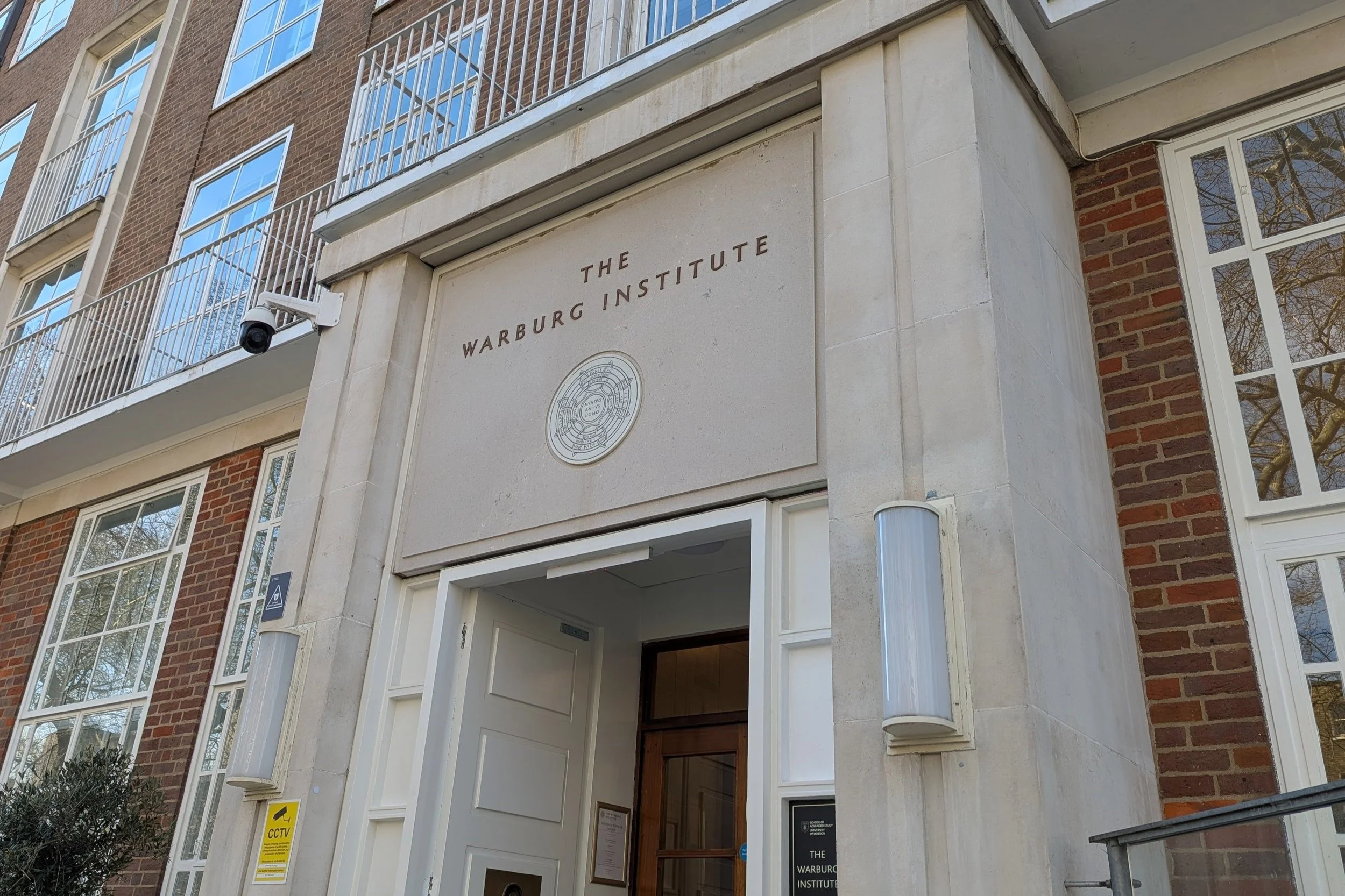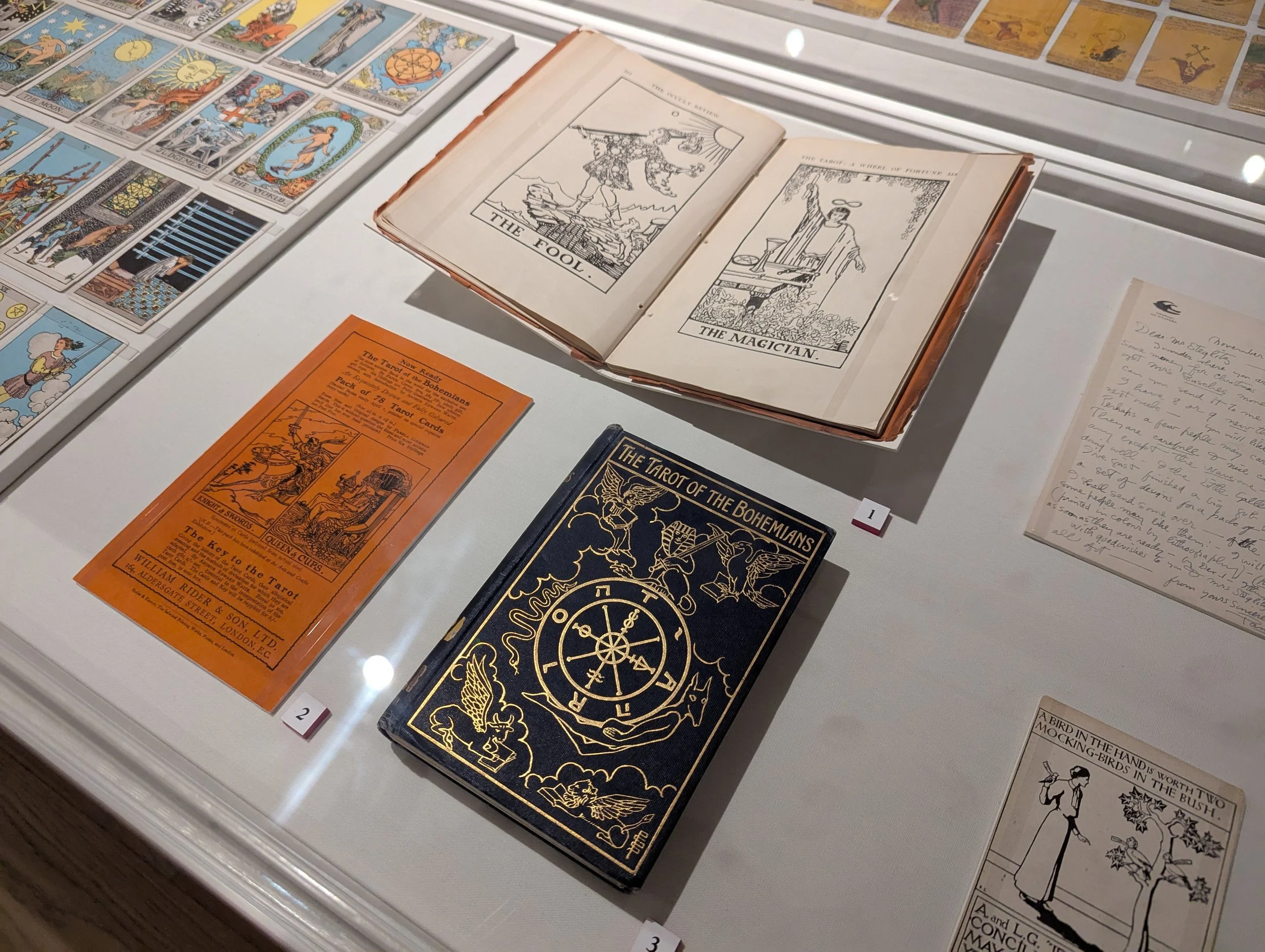Tarot - Origins and Afterlives; A London Exhibition Well Worth a Visit.
Nestled in the heart of the University of London campus stands a rather unassuming building. Blending into the surrounding university departments, the Warburg Institute surprisingly contains one of the finest collections of occult texts and images in Europe.
The front door of the Warburg Institute
I found myself at the Institute’s hallowed gates recently, drawn by the exciting prospect of their new exhibition: Tarot - Origins and Afterlives. The exhibition presents a nuanced history of the development of the tarot cards, beginning at their conception as personalised “tarocchi” game decks commissioned for wealthy Italian families. Examples of previous and influential decks are also on display, allowing the tarot enthusiast to plug into the currents of how our beloved modern 78 card deck came into being.
As one follows a route through the exhibition, the visitor then learns of how, from the mid 1800s, conceptions of the tarot changed from a parlour game to a fortune telling device. Very visual, the exhibition displays work of key figures in tarot history such as Etteilla, and some other examples of fortune telling cards such as the Minchiate 97 card deck.
Pamela Coleman-Smith’s work and original Rider-Waite deck advertisement and guidebook.
Of course, no tarot exhibition would be complete without a section on Pamela Coleman Smith, and fans will not be disappointed during their visit, as the exhibition has on display an original, full-colour first edition print of her beautifully designed Rider-Waite deck (seen peeping into the top left of the above picture). Alongside it is a book containing some of her original concept line-art for the deck as well, which was a real treat.
However, an unexpected and very welcome addition is the unique, and until recently unheard of, Austin Osman Spare tarot deck. This unfinished work had been buried in the vaults of the Magic Circle Museum for around 100 years until it was rediscovered in 2013. It was truly magical to see the cards in their different stages of readiness, with Spare’s loopy handwriting scrawling notes across their surface. This was one of the main draws of the exhibition for me, and the beautifully laid out cards and accompanying letters and notes did not disappoint. My camera could not do them justice - I encourage the interested party to go and have a look for themselves!
The exhibition also had a healthy section on Crowley’s Thoth tarot deck, which I looked around begrudgingly (I’m not big on Crowley). I did, however, leave with a newfound respect for the deck’s artist, Lady Frieda Harris. Some large scale original drawings of her card designs were on display there, and they were truly evocative and moving.
A Collection of Contributions from Modern Tarot Artists.
Finishing off with some more avant-garde contributions to the landscape of tarot by modern artists, the exhibition’s final section is a real smorgasbord of variety. From minimalism to covid-inspired viral motifs, it is a reminder that the tarot is a constant source of inspiration both as a divinatory tool and an artistic medium.
I highly recommend a visit to Tarot - Origins and Afterlives, on display at the Warburg Institute until the 30th of April 2025.
Book your visit (for free!) here: https://warburg.sas.ac.uk/events/tarot-origins-and-afterlives-2025




